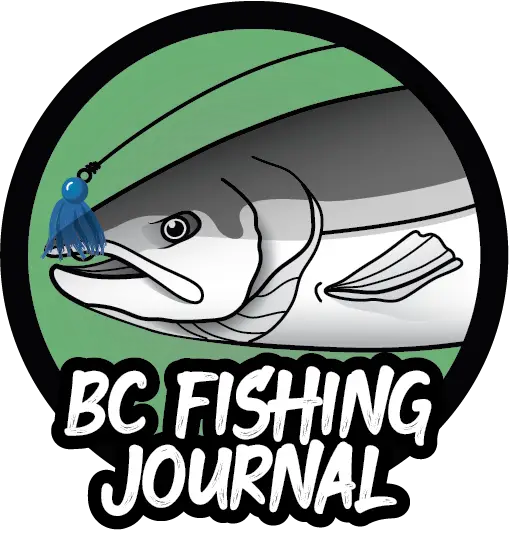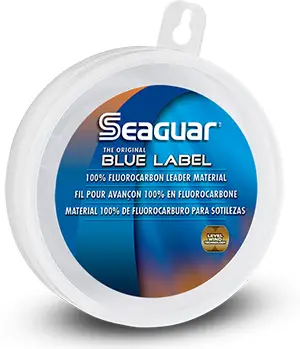Basic Lake and Pond Fishing Setups
Mixing and Matching!
It’s important to note that these 3 setups are all interchangeable, as they can contain combinations of elements from each of the setups. For example, the bobber in the setup #3 could replace the neutral buoyant float in setup #1, or the split shot weight could replace the 3-way swivel & drop-shot weight in setup #2. Additionally, these are not exhaustive for lake and pond fishing. The point being, depending on the type of fishing you’re doing certainly try combining these approaches for the best results!

Setup #1 – Cast and Retrieving
This fishing setup is geared so that the angler will continually cast and retrieve a metal/plastic lure. This is most often targeting fish in the upper to middle sections of the water.
Neutral Buoyant Float: There are many variations of this float, but the reason why they’re called “neutral buoyant” is because they have the option to add water into the float. Adding water weights down float to various depths depending on how much water you add. Typically, I fill them half full of water which usually achieves a fairly neutral buoyancy. The more water you add the quicker/deeper the float will sink. This is a huge pro as you can determine where you want your bait/lure to sit in the water column. Another positive is how the float acts as a weight so you can cast further. This is very important when you’re using a light tackle setup. You could also use weights instead of the float but I prefer these as they sink slower and cast easier.
Swivel: This is small piece of metal that connects the mainline to your leader line. Swivels remove line twists on your lines as they themselves will twist (“swivel”). They act as a great connector from a braid mainline to a mono / fluorocarbon leader, especially if the braid is highly visible line you won’t want the fish to see. Lastly, the swivel can act as a float stopper so it doesn’t slide all the way to your bait/lure. They also act a great bobber stop on the bottom Bobber stop in order to set the depth for your setup. The bobber stop above the float determines the depth of your bait/lure. I also like to use a 2nd bobber stop directly below the float so I can most easily see my float depth (and also find less issues with casting).
Spinner / Spoon / Blade: This is your metal / plastic lure that often will mimic a minnow or bait fish. Depending on the species you’re targeting these will change, the 3 I’ve included are classic lures that I love to use for Trout, Kokanee and pan fish.

Setup #2 – Fishing off the Bottom
This fishing rig is structured to so the angler can fish off the bottom of the water. This targets fish that are located near or on the bottom of the body of water. A good time to use this technique is when the fish are NOT active on the surface and they’re likely in the middle or lower sections of the water. This can be due to cooler water / air temperatures, time of the day (light conditions), seasonal (winter fish are more dormant), etc. If I don’t see a lot of fish surfacing or swimming near the surface, I like to use this setup.
3-Way Swivel: Similar to the general (2-way) swivel it connects the mainline to the leader line. The 3rd eye allows a weight or additional line. There are 3-way swivels that also have a snap instead of the 3rd eye, these are nice if you’re continually changing up your weights.
Weight: In this example I’ve included a round weight with a clip. The type of weight doesn’t really matter as long as you have a way to clip it to the 3-way swivel. The purpose of the weight is to sink and keep your bait on the bottom of the lake/pond. The size of the weight doesn’t have to be massive, but you’ll want something that provides enough weight in order to cast well. Fishing line weight, lure sizes and many other factors should affect the weight size, so I’d recommend trying a few different sized weights until you find that perfect balance.
Leader Line: This is a line that runs from the swivel to the hook. I recommend having a leader line strength that is less than the mainline, however as this is a basic setup it’s not mandatory. The leader off the bottom doesn’t need to be long, typically I will use 12″-18″ of a clear fluorocarbon / monofilament line.
Hook: The hook can be any type based on your local regulations. I like to use a single bait, worm or octopus style hooks. For more info and diagram on hooks see types of fishing hooks.
Bait (E.g. Power Bait): You can use any type of bait on the bottom. Since we’re fishing off the bottom it’s important to have a general idea as to what bottom is composed of (e.g. rock, mud, moss, logs, etc.). For example, if the lake is covered in moss and foliage, I’ll use a floating or neutral buoyant bait so it comes off the bottom a few inches, this ensure my bait won’t be hidden in the moss.
Trout Fishing with Setup #2
This video is me fishing for Rainbow Trout at my local lake. I’m using the Setup #2 fishing off the bottom with a weight, Octopus hook and PowerBait. I use an ultra-light spinning reel and spinning rod. I go over the tackle and setup at the 3:12 mark.

Setup #3 – Suspended Bobber and Bait Fishing
Here the angler can set his bait/lure at a chosen depth based on the length of line between the bobber and hook. This enables anglers to target fish near the top and middle sections of the water. This basic bobber, weight and worm is a classic starter setup for many anglers because it’s easy to setup and it works. Dangling a piece of bait in the upper water column above the fish
Bobber / Float: Bobbers or floats are generally plastic, cork or foam. They keep your hook/bait suspended near the surface or middle section of the water body. Additionally, the bobber acts an indicator for when the fish is biting the bait, as it will bob underwater or move from side to side. This visual indicator is important for beginning anglers as fishing off the bottom often times may involve some “feel” before setting the hook.
Split Shots: Are small weights that quickly and easily connect on your fishing line. Split shots are typically made from lead that are in the shape of a circle with a slight gap that splits open the weight so it can be closed onto the line with a simple pinch of your fingers. These are very versatile weigths as they can be placed anywhere on your line and can be swapped out for bigger/smaller weights very quickly.
Hook: As mentioned in the previous setup the hook can be any type (ensure it aligns with your local regulations). My preference is a bait, worm or octopus style hook. I also like using single hooks in order to decrease mortality of the released fish.
Bait (E.g. Worm, Fish Eggs, Shrimp, etc.): All bait is not created equal. It can vary based on the species, time of year, weather, water temperature and many other factors. That said, in this type of setup I prefer some sort of live/moving bait. As your lure is stationary, having something moving on the hook often works best. For example, when fishing for Trout I love to use worms, for Bass I use Leeches, Pike/walleye I like to use minnows and on and on the list goes. Please note to check your local regulations when using live bait.
If you want more information on Float setups for a river or moving water, see my tip: Float Fishing Setup.








